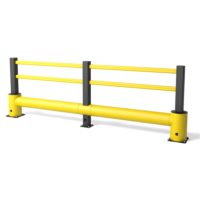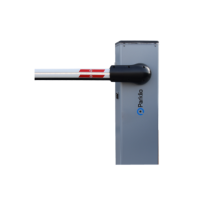Five Steps to Encourage a Safety Positive Workplace Culture
Everyone wants a safe workplace, but keeping your workers safe requires more than just fire extinguishers and safety barriers. To ensure a truly safe workplace, you need to cultivate a safety-positive workplace culture. That means fostering an environment that celebrates safe behaviour and encourages participation from everyone.
Building a safety-positive culture can seem like a daunting task, but a series of simple and attainable goals can get your workplace on track for sustained safety success. Remember, your workers want to be safe as much as you do. Continue reading to learn the five steps to encouraging a positive workplace safety culture.
1. Communicate
You can’t expect your workers to know what you don’t tell them. Practicing good communication skills when implementing your safety practices is vital. But effective communication is a two-way street. Create an environment where your workers can communicate with you. Are you available? Do you make your workers feel comfortable sharing safety concerns? Clearly define safety responsibilities, and verify that these instructions reach everyone. Healthy communication guarantees that workers understand safety practices and that you understand your workers’ safety experiences.
2. Engage
Put yourselves in your workers’ shoes. Undertake the difficult task of empathy. Your workers don’t just want to be told what to do – they also want to be heard. The best reporting you’ll get on the safety of your workplace will come from your own workers, so encouraging their input when developing safety practices will help your workers to take ownership of their workplace safety. This will help you avoid developing safety practices that are redundant, inefficient, or otherwise unhelpful.
3. Integrate
Workplace safety should not be something that exists outside the everyday requirements of your workers. Tacking safety procedures onto your workers’ existing responsibilities makes it unlikely that they will be prioritised. Safety practices are integral. Develop a safety plan that can become a part of your workers’ normal routine. Set aside time for safety meetings adjust allotted task times to reflect necessary safety procedures. Help your workers understand that safety is a part of their workday, and they will be more likely to internalise the desired safety practices.
4. Success-Oriented Approach
Your workplace safety culture should be aspirational. Rather than dwell on safety failures and communicate your safety goals through the prism of punishment, celebrate safety successes, and reward safe behaviour. Create an environment where meeting safety goals is rewarded not just by the absence of accidents, but also by recognition and reward. It may even help to reward workers who accurately report accidents, rather than punishing the safety failures that are reported. This encourages trust and engagement from your workforce.
5. Walk the Walk
Effective safety leadership starts at the top. Lead by example in your workplace. Demonstrate a thorough knowledge of workplace safety best practices. This means being able to answer questions, and being seen following your own safety procedures. You can’t expect your workers to know and abide by safety practices if you don’t. Delegation is important, but be willing to lead safety training yourself, occasionally. The significance of workplace safety will have more import if workers can see that it’s being administered from the top.
Make your workplace safety visible
Your workplace safety plan should involve than just cautious behaviour. Invest in safety equipment for your workers, and show them what their safety means to you. Contact Dexsafe today to learn more about the role that safety barriers can play in your safety positive workplace culture.








